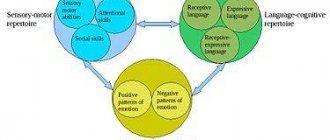Psychophysiology is the science of the physiological basis of behavior and mental activity. This article provides basic information about it. You will learn the history of its origin, features of the methodology, its significance, as well as some other important information about this science.
Psychophysiology is a special branch of psychology and physiology that studies the role of biological factors (these include the properties of the nervous system) in ensuring mental activity. Scientists distinguish differential psychophysiology, speech and thinking, sensations and perception, attention, emotions, voluntary actions. Currently, all these areas of knowledge are actively being developed.
The reason for the emergence of psychophysiology
Today, the question of the relationship between psychology and physiology is still open. It cannot be said unequivocally that the first is part of the second or the second is part of the first. However, there is no doubt that mental and physiological processes are parts of one psychophysical whole. There is also no doubt that ideas about this whole, so necessary for practical purposes, cannot be obtained separately either by physiology or psychology. It was to satisfy the need for knowledge about a person as a whole, and not for purely corporate or organizational reasons, that a new branch of biology called psychophysiology appeared. This science examines a very wide range of issues. The level of complexity of the problems it studies is much higher than that of psychology or physiology separately.
Interdisciplinarity of psychophysiology, probabilistic methodology
Psychophysiology is a field of knowledge that is interdisciplinary. It examines the organization of relations between probabilistic mental, physical and spiritual phenomena and human essences. Psychophysiology is a discipline that, for effective cognition, uses a set of principles, prerequisites, means and methods of cognition that allow scientists to study a specific object, which is a person. Thus, a probabilistic methodology is applied. It is necessary to say a few words about her.
Psychophysiology is a science that studies humans using probabilistic methodology. The latter was started back in 1867 by the English physicist James Clerk Maxwell. Probabilistic methodology claims to be universal in science. Maxwell is the first scientist to apply its methods to characterize probabilistic physical reality. This researcher is considered the creator of statistical physics. Probabilistic methodology has one important advantage over deterministic (traditional) methodology. It provides much more complete knowledge about the object being studied.
The meaning of psychophysiology
In the modern world, psychophysiology has become an important component for other sciences.
Taking into account the basics of psychophysiology, scientists are trying to equip personal computers with devices that read the user’s state. Such features will allow you to create a health-safe interface.
In the fields of cybernetics and robotics, experiments are being conducted to create artificial intelligence. Such bold attempts may one day yield good results. The world will become more automated and productive.
For medicine, prosthetics are being developed that can fully respond to signals from the owner’s brain. This will improve the lives of patients and make it more comfortable.
Creation of psychophysiology
It officially took shape in the mid-19th century. Its recognized creator is A.R. Luria, an outstanding Russian scientist (pictured above). Having a double education (psychological and neurological), he was able to combine the most important achievements of these disciplines into a single whole. The result of the work done was the combination of psychophysiology and neuropsychology.
For a long time it was generally accepted that the soul is incorporeal. In other words, the brain has nothing to do with it. Later, scientists began to locate mental functions in the three ventricles of the brain. Moreover, each of the ventricles was considered a storage place for the reflected impressions of the soul. It was believed that it is the abode of ideal images. The brain was considered as an organ from which vital energy, under the influence of will, flows into parts of our body through special channels called nerves.
Subsequently, thanks to the works of various scientists, mainly domestic (I. M. Sechenov, I. P. Pavlov, P. Ya. Galperin, A. N. Leontyev, A. R. Luria, N. A. Bernshtein, etc. ), a fairly clear idea was drawn up of the importance of the CNS (central nervous system) for the human psyche.
Psychophysiology of intelligence
The psychophysiological approach is based on the assumption that certain characteristics of the brain determine the properties of mental processes and constitute the physiological basis of mental abilities.
The most important representative of psychophysiological reductionism is G. Eysenck, who believed that intelligence is determined by the speed of information processing by the nervous system. The speed of information processing is related to the level of activation of the nervous system. Referring to his research, he draws the following conclusions:
1) in normal children the correlation between EEG parameters and IQ is small;
2) especially pronounced in children with mental retardation and borderline developmental delay;
3) children who are more mature in terms of EEG parameters have a higher IQ;
4) EEG frequency distribution is more correlated with IQ than topographic distribution.
In addition, averaged evoked potential (AEP) amplitudes were found to be positively correlated with IQ, while latency and EP offset were negatively correlated: correlations ranged from 0.20 to 0.40.
Natural scientific method I.M. Sechenov
I.M. Sechenov developed a special natural scientific method. Its essence can be defined by the following two principles:
- all kinds of mental phenomena are a product of the activity of the central nervous system, which means they obey the laws according to which other natural phenomena develop;
- it is necessary to adhere to the principle of historicism in the study of the psyche, that is, to go from the lower forms of its activity to the highest, from simple to complex, from the study of the animal psyche to the study of its specificity in humans.
Sechenov, applying these principles, approached the creation of a materialistic theory of reflection.
Works of I. P. Pavlov and further research
In the works of I.P. Pavlov, a famous Russian physiologist, the reflex theory was further developed. This scientist was the first to use an objective method of studying the mental functions of the brain, which was the conditioned reflex. Taking it into service, Pavlov investigated the physiological mechanisms in a number of processes that form the basis of elementary mental reactions. The works of this scientist, as well as representatives of his school, opened a new horizon in the study of brain activity experimentally.
Later, electrophysiological studies, supplemented by the method of conditioned reflexes, helped establish the fact that many mental processes are based on a certain functional organization in the structures of the brain. For example, we can consider memory as the result of the process of circulation of excitations along circuits of neurons that are closed, with further fixation at the molecular level of certain changes.
Emotions depend on how active certain centers located in the subcortical structures of the brain are. Currently, many mental reactions are reproduced artificially. For this purpose, the parts of the brain responsible for them are specially irritated. On the other hand, the brain, as well as the body as a whole, is reflected in everything that deeply affects our psyche. Thus, depression or grief can cause psychosomatic (physical) illnesses. Hypnosis can help heal or cause physical disorders. Witchcraft or violation of “taboo” among primitive peoples can even kill a person.
Maryutina T.M. Psychophysiology
Maryutina T.M. Psychophysiology
The closest thing to psychophysiology is physiological psychology, a science that arose at the end of the 19th century as a branch of experimental psychology. The term “physiological psychology” was introduced by W. Wundt to refer to psychological research that borrows methods and research results from human physiology. Currently, physiological psychology is understood as a branch of psychological science that studies the physiological mechanisms of mental activity from the lowest to the highest levels of its organization (see Psychological Dictionary, 1996 ). Thus, the tasks of psychophysiology and physiological psychology practically coincide, and at present the differences between them are mainly of a terminological nature. However, there was a period in the history of Russian psychophysiology when terminological differences were used to indicate the productivity of the functional-system approach to the study of the human psyche and behavior that was emerging in physiology. The identification of psychophysiology as an independent discipline in relation to physiological psychophysiology was carried out by A.R. Luria (1973).
According to the ideas of A.R. Luria, physiological psychology studies the foundations of complex mental processes - motives and needs, sensations and perceptions, attention and memory, the most complex forms of speech and intellectual acts, i.e. individual mental processes and functions. It was formed as a result of the accumulation of a large volume of empirical material about the functioning of various physiological systems of the body in various mental states.
Unlike physiological psychology, where the subject is the study of individual physiological functions, the subject of psychophysiology, as emphasized by A.R. Luria, serves the behavior of a person or animal. In this case, behavior turns out to be an independent variable, while the dependent variable is physiological processes. According to Luria, psychophysiology is the physiology of integral forms of mental activity; it arose as a result of the need to explain mental phenomena using physiological processes, and therefore it compares complex forms of human behavioral characteristics with physiological processes of varying degrees of complexity (see Luria “On the natural scientific foundations of psychology "), (see Luria "Organization of the Brain")
The origins of these ideas can be found in the works of L.S. Vygotsky, who was the first to formulate the need to study the problem of the relationship between psychological and physiological systems, thus anticipating the main perspective for the development of psychophysiology. ( L.S. Vygotsky, 1982 ). The theoretical and experimental foundations of this direction are the theory of functional systems by P.K. Anokhin (1968), based on the understanding of mental and physiological processes as complex functional systems in which individual mechanisms are united by a common task into whole, jointly operating complexes aimed at achieving a useful, adaptive result. The principle of self-regulation of physiological processes, formulated in Russian physiology by N.A., is directly related to the idea of functional systems. Bernstein (1963) long before the advent of cybernetics and who opened a completely new approach to the study of the physiological mechanisms of individual mental processes. As a result, the development of this direction in psychophysiology led to the emergence of a new field of research called systemic psychophysiology (V.B. Shvyrkov, 1988; Yu.I. Alexandrov, 1997). The relationship between psychophysiology and neuropsychology should be especially discussed. By definition, neuropsychology is a branch of psychological science that has developed at the intersection of several disciplines: psychology, medicine (neurosurgery, neurology), physiology, and is aimed at studying the brain mechanisms of higher mental functions using the material of local brain lesions. The theoretical basis of neuropsychology is developed by A .R. Luria's theory of systemic dynamic localization of mental processes. Along with this, in recent decades, new methods have appeared (for example, positron emission tomography), which make it possible to study the cerebral localization of higher mental functions in healthy people. Thus, modern neuropsychology, taken in its entirety, is focused on studying the cerebral organization of mental activity not only in pathology, but also in normal conditions. Accordingly, the range of neuropsychology research has expanded; such areas as the neuropsychology of individual differences and developmental neuropsychology appeared (see Reader on Neuropsychology , 1999). The latter actually leads to a blurring of the boundaries between neuropsychology and psychophysiology.
Finally, we should point out the relationship between the physiology of GNI and psychophysiology. Higher nervous activity (HNA) is a concept introduced by I.P. Pavlov, for many years was identified with the concept of “mental activity”. Thus, the physiology of higher nervous activity was the physiology of mental activity, or psychophysiology. The well-founded methodology and wealth of experimental techniques of GNI physiology had a decisive influence on research in the field of the physiological foundations of human behavior, however, slowing down the development of those studies that did not fit into the “Procrustean” bed of GNI physiology. In 1950, the so-called “Pavlovian session” took place, dedicated to problems of psychology and physiology. At this session the discussion was about the need to revive Pavlovian teachings. For deviating from this teaching, the creator of the theory of functional systems, P.K., was sharply criticized. Anokhin and some other prominent scientists. The consequences of the Pavlovian session were very dramatic for psychology. In the early 50s. XX century there was a forced introduction of Pavlovian teachings into psychology. According to A.V. Petrovsky (1967), in fact, there was a tendency towards the elimination of psychology and its replacement with Pavlovian physiology of GNI.
Officially, the state of affairs changed in 1962, when the All-Union Conference on philosophical issues of the physiology of higher nervous activity and psychology was held. It was forced to acknowledge the significant changes that occurred in science in the post-war years. Briefly characterizing these changes, it is necessary to emphasize the following.
In connection with the intensive development of new techniques of physiological experiment, and above all with the advent of electroencephalography, the frontier of experimental research into the brain mechanisms of the psyche and behavior of humans and animals began to expand. The EEG method provided an opportunity to look into the subtle physiological mechanisms underlying mental processes and behavior. The development of microelectrode technology and experiments with electrical stimulation of various brain structures using implanted electrodes have opened a new direction of research in the study of the brain. The growing importance of computer technology, information theory, cybernetics, etc. required a rethinking of the traditional principles of the physiology of GNI and the development of new theoretical and experimental paradigms . Thanks to post-war innovations, foreign psychophysiology, which for many years had previously been engaged in the study of physiological processes and human functions in various mental states, also significantly changed ( Hassett , 1981). In 1982, the First International Psychophysiological Congress was held in Canada, at which the International Psychophysiological Association was created and the journal International Journal of Psychophysiology was established. The intensive development of psychophysiology was also facilitated by the fact that the International Organization for Brain Research proclaimed the last decade of the twentieth century. "A decade of the brain." As part of this international program, comprehensive research was carried out aimed at integrating all aspects of knowledge about the brain and the principles of its work. For example, in 1993, the International Research Center for the Neurobiology of Consciousness “Bright Spot” was created at the Institute of Higher Intellectual Science and the Russian Academy of Sciences. Experiencing a period of intensive growth on this basis, the science of the brain, including psychophysiology, has come close to solving problems that were previously inaccessible. These include, for example, physiological mechanisms and patterns of information coding, chronometry of cognitive processes, etc. Trying to present the appearance of modern psychophysiology, B.I. Kochubey (1990) identifies three new characteristics: activism, selectivism and informativism. Activism presupposes a rejection of the idea of a person as a being passively reacting to external influences, and a transition to a new “model” of a person - an active personality, guided by internally set goals, capable of voluntary self-regulation.
Selectivism characterizes the increasing differentiation in the analysis of physiological processes and phenomena, which allows them to be placed on a par with subtle psychological processes.
Informativism reflects the reorientation of physiology from the study of energy exchange with the environment to the exchange of information. The concept of information, having entered psychophysiology in the 60s, became one of the main ones in describing the physiological mechanisms of human cognitive activity. Thus, modern psychophysiology, as the science of the physiological foundations of mental activity and behavior, is a field of knowledge that combines physiological psychology, the physiology of the internal nervous system, “normal” neuropsychology and systemic psychophysiology. Psychophysiology taken in full scope of its tasks includes three relatively independent parts: general, developmental and differential psychophysiology. Each of them has its own subject of study, tasks and methodological techniques. The subject of general psychophysiology is the physiological foundations (correlates, mechanisms, patterns) of mental activity and human behavior. General psychophysiology studies the physiological foundations of cognitive processes ( cognitive psychophysiology ), the emotional-need sphere of a person and functional states. The subject of age-related psychophysiology is ontogenetic changes in the physiological foundations of human mental activity. Differential psychophysiology is a section that studies the natural scientific foundations and prerequisites of individual differences in the human psyche and behavior.
1.2. Problems of the relationship between the brain and the psyche
Let's imagine the brain of a living person: it looks like a small oval body with an uneven surface, consisting of a pliable gelatin-like substance. How does this body (whose average weight is 1500) produce thoughts and feelings, control the subtle movements of the artist's hand? How are the processes that arise in it connected with world culture: philosophy and religion, poetry and prose, kindness and hatred? How does this grayish-white jelly-like mass constantly accumulate ideas and knowledge, causing the body to perform actions of varying complexity - from a simple raising of an arm to the virtuoso movements of a gymnast or surgeon? In these questions, in an extremely sharp metaphorical form, one can express the essence of the main problem of psychophysiology - the problem of the relationship between the brain and the psyche, the mental and the physiological.
History of the problem and solutions. The problem of the relationship between the psyche and the brain, the soul and the body, dividing them into different levels of existence has deep historical traditions and, above all, the traditions of European thinking, which differs significantly from many Eastern worldview systems.
In the European tradition, the terms “soul” and “body” were first considered from a scientific position by the outstanding philosopher and physician Rene Descartes, who lived in the 17th century. According to Descartes, the body is an automaton that acts according to the laws of mechanics, and only in the presence of external stimuli. It was Descartes who put forward the idea of a reflex as a machine-like response behavioral act (although the term “reflex” itself was proposed a century later). The soul, on the contrary, is a special entity (substance), consisting of non-extended phenomena of consciousness - “thoughts”. It is thought that represents the most accessible object of introspection. Hence the famous statement: “I think, therefore I am.”
So, Descartes considered the soul and body as two independent, independent substances. However, just as the soul can influence the activities of the body, so the body, in turn, is able to provide the soul with information about the outside world. To explain this interaction, Descartes suggested that in the human brain there is a special organ - the pineal gland - an intermediary between the soul and the body. The influence of the external world is first transmitted by the nervous system, and then, in one way or another, “someone” ( homunculus ) deciphers the information contained in nervous activity.
Thus, Descartes, having clearly separated the human body and soul, first posed the problem of their relationship and gave the first version of its solution, called psychophysical and/or psychophysiological parallelism . Descartes' teaching, which proceeds in the explanation of existence from the presence of two opposite principles - material and spiritual - was called Descartes' dualism. Similar views were held by many of Descartes' contemporaries and followers, for example, the outstanding philosopher and mathematician Leibniz. According to his ideas, the soul and body act independently and automatically due to their internal structure, but they act surprisingly coordinated and harmonious, like a pair of precise watches that always show the same time.
Psychophysical problem. As the famous Russian historian of psychology M.G. emphasizes. Yaroshevsky (1996), Descartes, Leibniz and other philosophers analyzed mainly the psychophysical problem. When solving a psychophysical problem, we were talking about the inclusion of the soul (consciousness, thinking) in the general mechanics of the universe, about its connection with God. In other words, for philosophers solving this problem, the actual place of the psyche (consciousness, thinking) in the holistic picture of the world was important. Thus, the psychophysical problem, connecting individual consciousness with the general context of its existence, is, first of all, philosophical in nature.
The psychophysiological problem consists in resolving the issue of the relationship between mental and nervous processes in a particular organism (body). In this formulation, it constitutes the main content of the subject of psychophysiology. The first solution to this problem can be designated as psychophysiological parallelism. Its essence lies in the opposition of the independently existing psyche and brain (soul and body). In accordance with this approach, the psyche and the brain are recognized as independent phenomena not related to each other by cause-and-effect relationships.
- At the same time, along with parallelism, two more approaches to solving the psychophysiological problem were formed: psychophysiological identity, which is a variant of extreme physiological reductionism , in which the mental, losing its essence, is completely identified with the physiological. An example of this approach is the well-known metaphor: “The brain produces thoughts, like the liver produces bile.”
- psychophysiological interaction, which is a variant of palliative, i.e. partial solution to the problem. Assuming that the mental and physiological have different entities, this approach allows for a certain degree of interaction and mutual influence.
The evolution of ideas about reflection. The idea expressed by Descartes about the reflex principle of organizing the simplest behavioral acts found its fruitful development in further research, including those aimed at overcoming psychophysiological parallelism. The outstanding physiologist I.M. played a major role in this. Sechenov. He substantiated the possibility of extending the principle of reflex as a deterministic principle of organizing behavior to the entire functioning of the brain. Sechenov argued that mental acts are of the same strictly natural and deterministic nature as acts considered purely nervous.
He introduced the idea of a hierarchy of reflexes, proving that along with elementary ones there are many complex reflexes. These are reflexes with a truncated and delayed end, in which past experience is updated. A thought, according to Sechenov, is a mental reflex with a delayed ending, developing along an internal chain of associated reflexes, and a mental reflex with an enhanced ending is affect , or emotion. He also introduced the idea of the mental element - an integral part of the reflex process, thanks to which the body can actively adapt to the environment. Considering mental feeling as an integral element of the internal structure of the reflex, Sechenov firmly connected the concept of the mental with the reflex, and substantiated the impossibility of separating the mental from reflex activity. As M.G. writes Yaroshevsky (1996, p. 163): “New, compared to the one created by Descartes, Sechenov’s model of the reflex, which embodied, instead of the mechanical style, the biological style of thinking, opened up prospects for building a new system of knowledge about the relationship between the organism and the environment. It is this system that received the name behavior.”
Subsequently, in the works of I.P. Pavlov and his school of research into the reflex foundations of behavior received deep theoretical and experimental development. The problems of this circle are discussed in detail in the textbooks of L.G. Voronina, A.S. Batueva, N.N. Danilova and A.L. Krylova and others.
1.3. Modern ideas about the relationship between mental and physiological
Despite many achievements in psychophysiology, especially in recent decades, psychophysiological parallelism as a system of views has not become a thing of the past. It is known that outstanding physiologists of the twentieth century. Sherington, Adrian, Penfield, Eccles adhered to a dualistic solution to the psychophysiological problem. According to their opinion, when studying nervous activity there is no need to take into account mental phenomena, and the brain can be considered as a mechanism, the activity of certain parts of which, in extreme cases, parallels various forms of mental activity. The goal of psychophysiological research, according to their opinion, should be to identify patterns of parallelism in the flow of mental and physiological processes.
The relationship between the psyche and the brain. Numerous clinical and experimental data accumulated in science in recent decades indicate, however, that there is a close and dialectical relationship between the psyche and the brain. By influencing the brain, you can change and even destroy the spirit (self-awareness) of a person, erase your personality, turning a person into a zombie. This can be done chemically, using psychedelic substances (including drugs), “electrically” (using implanted electrodes); anatomically, having operated on the brain. Currently, with the help of electrical or chemical manipulations with certain areas of the human brain, states of consciousness are changed, causing various sensations, hallucinations and emotions. All of the above irrefutably proves the direct subordination of the psyche to external physical and chemical influences. Moreover, recently more and more evidence has been accumulating that human psychological states are closely related to the presence or absence of a particular chemical substance in the brain.
On the other hand, everything that deeply affects the psyche also affects the brain and the entire body. It is known that grief or severe depression can lead to physical (psychosomatic) illnesses. Hypnosis can cause various somatic disorders and, conversely, promote healing. The amazing experiments that yogis perform with their bodies are widely known. Moreover, such a psychocultural phenomenon as breaking a “taboo” or witchcraft among primitive peoples can cause death even in a healthy person. There is evidence that religious miracles (appearances of the Mother of God, Holy icons, etc.) contributed to the healing of patients with various symptoms. It is interesting in this regard that the placebo effect, i.e. the effect of a neutral substance, which is used instead of an “ultra-modern” medicine, is effective for one third of patients, regardless of their social status, cultural level, religion or nationality.
In general, the above facts clearly indicate that such a close relationship between the brain and the psyche cannot be explained from the standpoint of physiological parallelism. It is important, however, to emphasize something else. The relationship of the psyche to the brain cannot be understood as the relationship of the product to the manufacturer, the effect to the cause, since the product (psyche) can and often very effectively influences its manufacturer - the brain. Thus, between the psyche and the brain, mental and physiological, there appears to be a dialectical, cause-and-effect relationship that has not yet received a full explanation. Researchers never give up trying to get to the bottom of the problem, sometimes offering highly unusual solutions. For example, such outstanding physiologists as Eccles and Barth believe that the brain does not “produce spirit,” but “detects it.” The information received by the senses is “materialized” into chemical substances and changes in the state of neurons, which physically accumulate the symbolic meanings of sensory sensations. This is how the interaction of external material reality with the spiritual substrate of the brain occurs. At the same time, however, new questions arise: what is the “carrier” of the spirit outside the brain, with the help of which receptors is the external “spirit” perceived by the human body, etc.
Along with such “extravagant” solutions, new approaches to studying the relationship between physiological and psychological are being developed in the context of domestic science.
- Modern options for solving the psychophysiological problem can be systematized as follows:
- The mental is identical to the physiological, representing nothing more than the physiological activity of the brain. Currently, this point of view is formulated as the identity of the mental not with any physiological activity, but only with the processes of higher nervous activity. In this logic, the mental acts as a special aspect, a property of the physiological processes of the brain or the processes of higher nervous activity
- Mental is a special (highest) class or type of nervous processes that has properties not inherent in all other processes in the nervous system, including VND processes. Mental is such special (psycho-nervous) processes that are associated with the reflection of objective reality and are distinguished by a subjective component (the presence of internal images and their experience).
- The mental, although determined by the physiological (higher nervous) activity of the brain, is nevertheless NOT identical to it. The mental cannot be reduced to the physiological as the ideal to the material or as the social to the biological.
None of the above solutions have received general acceptance, and work in this direction continues. The most significant changes in the logic of analyzing the “brain-psyche” problem resulted from the introduction of a systems approach into psychophysiology.
1.4. Systemic foundations of psychophysiology
- 1.4.1. Functional system as a physiological basis of behavior
- 1.4.2. A systematic approach to the problem of individuality
- 1.4.3. Information paradigm
- 1.4.4. Interneuronal communication and neural networks
- 1.4.5. A systematic approach to the “brain-psyche” problem
In the 50s XX century Intensive development of the general theory of systems and the spread of the systems approach began. Systematicity acted, first of all, as an explanatory principle of scientific thinking, requiring the researcher to study phenomena in their dependence on the internally connected whole that they form, thereby acquiring new properties inherent in the whole (Yaroshevsky, 1996). The systems approach as a methodological tool was not “invented” by philosophers. It guided research practice in reality before it was conceptualized theoretically. As M.G. emphasizes Yaroshevsky, natural scientists themselves identified it as one of the working principles. For example, the outstanding American physiologist W. Cannon, who discovered the principle of homeostasis, considered it as synonymous with the principle of systematicity. The penetration of a systems approach into the physiology of GNI and psychology has radically changed the logic of scientific research. First of all, this affected the study of the physiological basis of behavior.
Object of knowledge and subject of psychophysiology
General psychophysiology is the science of the life activity of a healthy person. The clinical one (more about it at the end of the article) studies sick people.
Man, as we know, has three hypostases. Psychophysiology is a science that takes into account all levels of its organization. Man has the unity of the following three probabilistic essences:
- bodily (physical, carnal);
- mental (mental);
- spiritual.
Consequently, the subject of psychophysiology is the physical, mental and spiritual essences of man in their interdependence and interconnection. This discipline, thanks to the success of studying the activity of neurons in the brain of animals, as well as in connection with the possibility of clinical examination of people, began to consider not only physiological, but also neural mechanisms of various mental states, processes and behavior. Modern psychophysiology deals, among other things, with the study of neural networks and individual neurons. This is determined by the current trend towards the integration of various disciplines that study the functioning of the brain (neurochemistry, neurophysiology, neuropsychology, psychophysiology, molecular biology, etc.) into a single neuroscience.
The different branches of the discipline we are interested in have their own subject matter. Physiological psychophysiology, for example, studies patterns of behavior and mental response, which depend on the state of physiological parameters, on the speed of reactions of the peripheral and central nervous systems, as well as the soma as a whole (at the systemic, tissue and cellular levels).
The main theories of psychophysiology.
The number of methods and capabilities of brain research allow scientists to regularly reveal new facts about humans. One of the shocking news is the refutation of the theory of Nobel laureate Roger Sperry about “right-brain” and “left-brain” abilities. In fact, both hemispheres are equally involved. The point is not in their “development”, but in the number of neural connections.
There are other theories that refute established ideas about the brain. What other interesting facts does neuroscience give us:
- Nerve cells actually regenerate themselves, a process called neurogenesis.
- The level of intelligence does not depend on the size of the brain.
- The main purpose of the brain is learning.
- The state of the body affects the perception of the outside world much more than it seems.
- The brain can record information bypassing consciousness.
- The brain itself makes a decision, and then “convinces” us that this is our choice.
- In fact, the brain uses its potential at 100% (and not at 9-10%, as was previously thought).
- Brain development does not end at age 25, but thinking abilities depend on its plasticity.
- Our memory does not deteriorate, it just cannot cope with so much information.
- The psyche reacts to verbal insults in the same way as to a blow to the head with a stick.
- Applying your palm to the sore spot reduces the pain by about 3 times.
One of the most revealing psychophysiological processes is motivation. It controls human behavior, gives energy, enhances organization, concentration, and activity. One of the most surprising is mirror neurons, which control our ability to empathize.
Take the EQ emotional intelligence test
The Meaning of Discipline
The discipline we are interested in complements psychology, neuroscience, psychiatry, pedagogy and linguistics. Psychophysiology is a necessary link through which the human psyche is considered as a whole, including many complex forms of behavior that remained studied before its emergence.
For example, if you know which stages of ontogenesis are most sensitive to certain pedagogical influences, then you can influence the development of very important physiological and psychophysiological functions, such as memory, thinking, attention, perception, motor activity, mental and physical performance, etc. If you have an idea of the age-related characteristics of a child’s body, you can best reveal his physical and mental abilities, develop scientifically sound valeological and hygienic requirements for health-improving and educational work, organize a daily routine, physical activity and nutrition that suits individual needs. -constitutional characteristics and age. In other words, pedagogical influences can be optimal and effective only when they take into account the age characteristics of the child and adolescent and the capabilities of his body.
Psychophysiology of sleep
Sleep is a specific functional state of the nervous system and the body as a whole with characteristic behavior and psychophysiological indicators.
Physiological changes during sleep.
- The most common sleep symptoms include decreased nervous system activity and loss of contact with the environment due to sensorimotor disturbances.
- The threshold of any sensitivity (vision, hearing, taste, smell and touch) increases during sleep. The threshold can be used to estimate the depth of sleep. In the first four phases, the detection threshold increases by 30-40%, and in the REM sleep phase - by 400%.
- Reflex function during sleep is severely impaired.
- Conditioned reflexes are inhibited, unconditioned reflexes are significantly reduced. However, certain types of cortical activity and responses to certain stimuli may persist during normal interrupted sleep. For example, a sleeping mother hears the sounds of a sick child moving. This phenomenon is called partial vigilance.
- Most muscles are at rest during sleep and a person is able to maintain a certain posture for a long time. This improves the tone of the muscles that close the eyelid, as well as the circular muscles that close the bladder. As you fall asleep, your heart and breathing slow down and become more regular.
Age-related physiology and psychophysiology
Age-related physiology is a science that studies the characteristics of the life activity and development of the body during ontogenesis. She studies the functions of the body as a whole, organ systems and individual organs as they grow, and the uniqueness of these functions at different age stages.
Ontogenesis is the central concept of such a discipline as age-related physiology. It was introduced back in 1866 by E. Haeckel. In our time, ontogenesis refers to the individual development of an organism throughout its life (from the moment of conception to death).
Age-related physiology and psychophysiology took shape relatively recently. The first emerged only in the second half of the last century. Embryology is a science that studies the characteristics and patterns of the body’s vital functions at the stages of intrauterine development. Later stages, from maturity to old age, are considered by gerontology.
Age-related physiology uses various research methods, including the morphological characteristics of the body (its length, weight, waist and chest circumference, hip, shoulder circumference, etc.). This discipline is one of the branches of developmental biology, a very broad field of knowledge.
Psychophysiology of stress
Stress is the human body’s reaction to overload, negative emotions, or simply monotonous excitement.
Conditions of stress.
Any stimulus is interpreted in two ways:
- from the objective side (in the cerebral cortex);
- from the subjective side (in the limbic system).
When a subjective assessment speaks of a threat, i.e., has a negative affective connotation (fear, anger), it acquires a trigger role, automatically causing a series of corresponding physiological reactions. If the threat is not perceived, there is no stress reaction.
Consequences.
- All systems are responsible for stress - nervous, endocrine, cardiovascular, gastrointestinal, etc.
- Very often, especially after prolonged stress, weakness occurs due to overwork of the whole body.
- Stress associated with chronic gastritis usually causes a deterioration in the activity of the “weakest” cell in the body, an already diseased organ, such as a stomach ulcer.
- Stress increases the risk of infection by weakening the body's immune system.
- Most often, stress affects the cardiovascular system.
- During times of stress, breathing becomes faster.
- An increase in blood sugar, which is also part of the body's response to stress, starts a chain reaction in which all body systems are affected in one way or another.
Ways to cope with stress.
- Active - cognitive (a person tries to control the assessment of stress);
- Active behavior (personal behavior is focused directly on stress);
- Avoiding stress.
Features of human ontogenesis
The origin of man influenced the features of his ontogenesis. In the early stages, it has a certain similarity with the ontogenesis characteristic of higher primates. However, the specificity of man is that he is a social being. This left an imprint on its ontogenesis. First of all, the period of childhood has increased. This is due to the fact that a person needs to learn a social program during training. In addition, the period of intrauterine development has increased. Puberty in humans occurs later than in great apes. The periods of growth spurt, as well as the transition to old age, are clearly marked out for us, unlike these animals. Our overall life expectancy is longer than that of the great apes.
How to strengthen mirror neurons and develop empathy?
Even if we don’t smile, the facial muscles react to someone else’s smile - this is a proven fact. During a study conducted by scientists, a person had to clench a pencil in his teeth and watch other people. It turned out that the facial muscles fixed in this way could not react, and as a result, the person recognized other people’s emotions worse.
It's all about mirror neurons. These special cells of the cerebral cortex help us “try on” other people's movements and emotions. The point of motor mirror neurons is to repeat the movements of others and learn yourself. Emotional mirror neurons help you feel what another person feels.
Empathy helps you understand other people. The ability to empathize is not inherited and does not depend on the level of intelligence. Empathy is a very human quality, conditioned by the norms of human society and moral values. It is impossible to force yourself to sympathize. Of course, it is not a lack of mirror neurons that can be cited. But you can develop the skill of empathy.
Take the empathy test
Train.
Empathy can be learned by reading books, communicating, watching films or plays. For example, watch psychological films for training and put yourself in the shoes of the main character. You can pause the film in moments of difficult choices or changing circumstances and think about what you would do in a similar situation. This will be a useful workout.
Look for a person.
This technique for heightening empathy has its origins in Buddhist practices: spend a day thinking about the person who has a hand in your daily life. Our lives are directly connected with the lives of other, unknown people: sellers, trolleybus drivers, repairmen. Connecting with strangers unlocks your empathic potential. You can not only meet different people, but also overcome barriers: racial, religious, national.
Learn to listen.
This means not just being present, but hearing your interlocutor, trying to understand the meaning of his judgments. It is also useful to “listen” with your eyes - pay attention to the microfacial expressions of your interlocutor. Facial microexpressions last only moments, but they help to recognize true emotions.
Put yourself in the shoes of your interlocutor.
This universal technique helps not only to understand the interlocutor, but to respond to his words with the right questions and comments. By understanding the experiences of the interlocutor, it is easier to grasp the essence and respond correctly - so that the person will want to tell even more.
Help your interlocutor feel free.
In tense moments, you can nod to your interlocutor or make an appropriate gesture to encourage him to talk further. But at the same time, eliminate any distractions: do not click the pen button, do not rustle the paper, turn off the phone ringer.
Listen to the general meaning, not individual words.
Perhaps the most difficult thing is to try to grasp the general meaning, and not be distracted by individual phrases or expressions. Concentration and the absence of distracting sounds will certainly help you see the whole picture.
Watch for nonverbal cues.
Eye movements, crunching of fingers, nervous chuckles, rapid breathing - all this is introduced into the general context of communication. Sometimes body movements can provide more information than spoken words. And all because they are focused on the unconscious and are perceived by us at a more “subtle” level.
Keep your distance.
According to S. Freud, people with empathic abilities easily pass other people's emotions through themselves. This is where you need to be careful. Sometimes too intense empathy pushes the listener to protect the interlocutor from strong experiences. Together with experiencing other people's pain, grief, and traumatic events, this can become a difficult test for the listener.
Age norm and rate of development
It is very important for both the teacher and the doctor to understand the level of development of the child with whom they work. Age-related physiology and psychophysiology determine what is considered the norm and what is a deviation from it. Any significant developmental deviation means the need to apply non-standard methods of treatment and education to a person. Therefore, one of the most important tasks of developmental psychology is to establish the parameters that determine the age norm.
It should be noted that the pace of development does not always correlate with its final level. Slowing down this process often leads to the achievement of outstanding abilities by a person (albeit later than his peers). On the contrary, often accelerated development ends too early. As a result, a person who initially showed great promise does not achieve high results in adulthood.
Strong deviations in the rates of development and growth are relatively rare. However, small variations that result in moderate leads or lags are common. How should we treat them? Are these manifestations of deviations in development or its variability? Age-related physiology provides answers to these and other questions. It develops criteria to judge the extent of deviations from the norm and the need to take measures to eliminate them or mitigate their consequences.
Clinical psychophysiology
It is an important applied area of psychophysiology. This is an interdisciplinary field of knowledge that examines the physiological mechanisms of various changes in mental activity in somatic and mental pathologies, as well as their influence on each other.
Clinical psychophysiology is a discipline that also involves the study of pathogenetic mechanisms, etiological factors, professional rehabilitation and treatment of psychosomatic diseases. It cannot do without the knowledge and methods of a number of related disciplines (neurochemistry, neurophysiology, experimental psychology, neuropsychology, neuroradiology, etc.). Through field surveys and laboratory experiments, it is possible to understand how human behavior and experience affect regulatory processes and physiological responses. From this we can deduce the patterns of psychosomatic relationships.
As a rule, the measured psychophysiological quantities are recorded non-invasively on the surface of the human body (as a result of the activity of the functional systems of the body). Their physical properties are measured using sensors. These sensors record and at the same time amplify the detected indicators, so that the resulting values can be converted into biosignals. Taking this method as a basis, researchers draw a conclusion about what somatic processes underlie a particular phenomenon and their dynamics during the influence of psychotherapy.
So, psychophysiology is a science, the definition of which is presented at the beginning of the article. We talked about its subject, method, history of origin and development, as well as some important branches. Psychophysiology is a science that studies both the psyche and physiology of a person, therefore it is interdisciplinary in nature.
Directions of psychophysiology
Psychophysiology studies the relationship and correlation of mental processes with an organic substrate. And also, the influence of biological influence on the psyche is assessed.
For psychophysiology, the main aspects of study are:
- thinking and speech;
- emotional manifestations;
- physical activity;
- memory and learning processes;
- voluntary actions;
- dream;
- state of stress;
- functional states.
In the modern world, psychophysiology is divided into separate scientific fields.
- Neuropsychology studies brain structures and their interaction with the psyche.
- Neurophysiology studies the nervous system from a functional perspective.
- Psychodiagnostics is an instrumental area of psychology. She works with individual personality traits. As part of psychodiagnostics, questionnaires are used to examine the human psyche.
- The goal of psychogenetics is heredity and variability of psychophysiological properties.
- Psychophysics studies the range of sensations associated with physical processes that can be measured.
- Psychosomatics deals with bodily diseases associated with the influence of mental factors.
- Clinical psychology is close to psychiatry. She studies the combination of mental manifestations and diseases. Methods of clinical psychology make it possible to carry out rehabilitation activities with patients suffering from mental disorders.
- Developmental psychology studies changes in the psyche from the point of view of the natural development of a person. This field of science evaluates development during ontogeny (the period of an organism's life), but relies on knowledge about the phylogenetic development (the period of evolutionary development) of the species.
- Pathopsychology compares mental indicators in mental illness with the norm. It is a component of clinical psychology.










